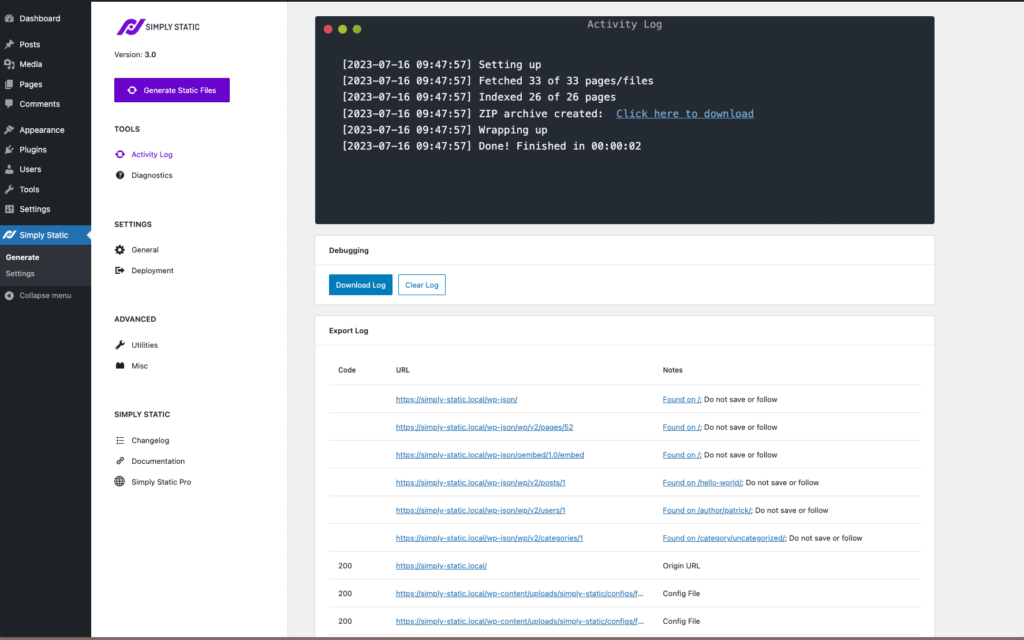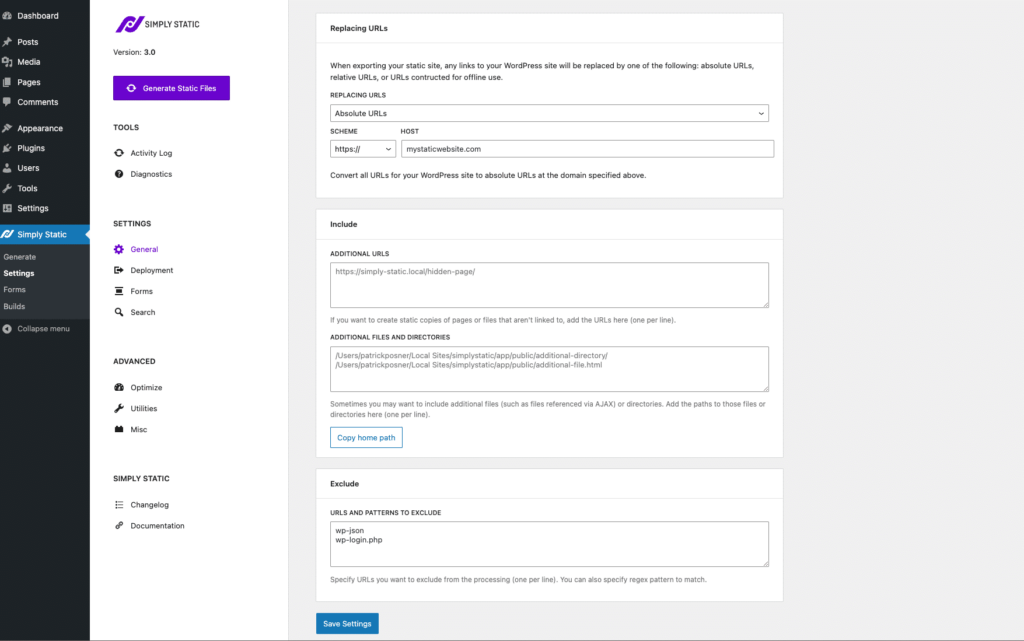Table of Contents
A traditional content management system (CMS) such as WordPress uses server technologies (like PHP) to generate a web page dynamically when a visitor accesses the page. When someone visits a dynamic web page, the server locates and assembles different pieces of data and organizes it into a single web page using a template engine.
Static site generators also use a template engine to process web pages, however, they do all the work ahead of time. So, when the user goes to a certain web address, they’ll be served pre-built pages that are delivered straight to their web browser. This is why static pages load much more quickly than dynamic pages.
In this article, we’ll take a closer look at what static site generators are and how they can help you build and deliver a great website experience to visitors.
What are static site generators?
A static website is composed of a series of HTML pages that load exactly the same way each time. Static sites differ from dynamic sites which dynamically build a web page every time someone visits the page.
A dynamic website loads pages based on variable data inputs like the time, user’s location, or other user-based input. For example, the marketing message on the website’s sales page might change depending on where the user is accessing the website from.
Static web pages are simple HTML files containing fixed content where each page shows the same information to every user. They are easy to create and load quickly. Dynamic pages, on the other hand, are built “on the fly” and require JavaScript code to run inside the web browser to render.
Run fast, secure, and maintenance-free WordPress with Static Studio.
A static site generator is a software application that generates a static HTML website based on raw data and templates. Basically, a static site generator automates page creation and makes those web pages ready to serve to site users in advance. As these are pre-built HTML pages, they deliver content quickly to the user’s browsers.
Static site generators offer an alternative to the traditional CMS, enabling you to deliver content at lightning-fast speeds and allowing large teams to work together on projects simultaneously and autonomously.
A static site generator is commonly used by web developers to build sites that don’t require user input or interaction such as blogs (with comments disabled) and brochure sites (with no forms). It is also a perfect fit for businesses that need a content delivery mechanism for creating and delivering unique digital experiences to their customers.
Now that you know what static site generators are, let’s see how static websites fare in terms of security, performance, scalability, and version control.
Why use a static site generator
In this section, we’ll take a look at some of the benefits of using a static site generator to create web pages.
Security
Static site generators are known to have a great security profile. They work by creating a set of static assets that are served either from a simplified web server or a content delivery network (CDN). As the site assets are rendered in advance and arrive ready-to-serve, you don’t need to implement a complicated infrastructure for serving them.
In addition to this, using static sites along with a CDN is a great preventive measure against cyber attacks. This is because when you remove the infrastructure responsible for performing calculations and work, you protect your website from common implementation vulnerabilities such as SQL injections and cross-site scripting (XSS).
Similarly, when you no longer use databases, perform calculations, and modify site assets for every view, you’ll be able to simplify your hosting infrastructure. This helps make your website more secure because there will be fewer servers sending requests.
Performance
Website speed is affected by the distance site assets have to travel, the number of servers involved, and the logical operations and other work being performed on these servers. By default, static assets load faster as compared to server-rendered assets as there is no database or application server involved. Plus, static assets can be quickly served through a CDN. You’ll be able to deliver pre-rendered and ready-to-serve content straight from a content distribution network which shortens the distance and eliminates all interactions with any one of the servers.
Sites created using a static site generator allow visitors to view content without interacting with the systems in generating each page view.
This way, you’ll be able to deliver great site speeds even during traffic spikes without the need for implementing additional infrastructure.
Scalability
For traditional websites, an increase in site traffic leads to slow or unresponsive pages which means you have to, in most cases, overpay to scale your website. However, with static websites, you don’t have to worry about spikes in traffic once your website starts growing because you don’t need additional computing resources to meet increased requests. In other words, you’re not processing a response for every request as you’ve done the work in advance. By making sure that everything works perfectly, thanks to the automated build process, you’ll be able to simply serve the users what they request.
This is similar to how caching works but without the management overhead. A pre-built website enables you to cache everything in the CDN and serve it directly to users. Your website’s infrastructure comes in ready for scalability. So, with increased site traffic, you’ll be serving more web pages – without spending any additional time or resources to serve the same content multiple times as they don’t need to be processed with every delivery.
Version Control
Version control is another reason why static websites are much faster as compared to dynamic sites. With dynamic sites, every time a user visits a page, the website goes back to the server to process the request whereas static site generators keep a “pre-built” version that can be served to the user almost instantly.
Additionally, with static websites, all of the website’s pages and content are stored in a version control system. This way, you can easily roll back to any previous version of your website. It also serves as an offsite backup which allows you to quickly restore your website.
Another benefit of using static sites is that if there is a team of developers working simultaneously on a project, you can work on multiple versions of the website and merge them together afterward. This way, you’ll also be able to easily clone the production environment on your local machine.
Similarly, you can choose to store your source code in an open-source repository on GitHub, and allow anyone to make modifications and make suggestions.
Introducing Simply Static
Simply Static is a static site generator for WordPress that lets you generate a static website from the WordPress admin and deploy it to a directory on your server.

It is a great fit for site owners and businesses looking to increase security and deliver better performance to their users.
Using the Simply Static plugin, you can create a static site and serve it separately from your WordPress installation. One of the benefits of this is that you can keep it in a secure location that only you have access to.
Let’s say you want your existing WordPress website replaced with a static site. For this, you’ll need to first move your existing website to a subdomain. So, instead of www.example.com, it would be on something like wordpress.example.com. Once you’ve done that, you can set up your www.example.com domain to receive static files.

The Simply Static plugin will copy the static files to the directory that your site is serving files from. And if your site is on a different server, you can simply download a .zip of your static files and upload them to the correct domain.

All you have to do is choose a deployment option (zip, directory, or locally as an archive), choose which pages to include or which ones to exclude, and configure access to the page.
Conclusion
Static site generators offer a lightweight alternative to the traditional database-driven, resource-intensive, dynamic websites. They can help you build web pages that are secure, fast, and scalable.
Using the Simply Static plugin, you can generate a static site directly from the WordPress admin area in no time.
